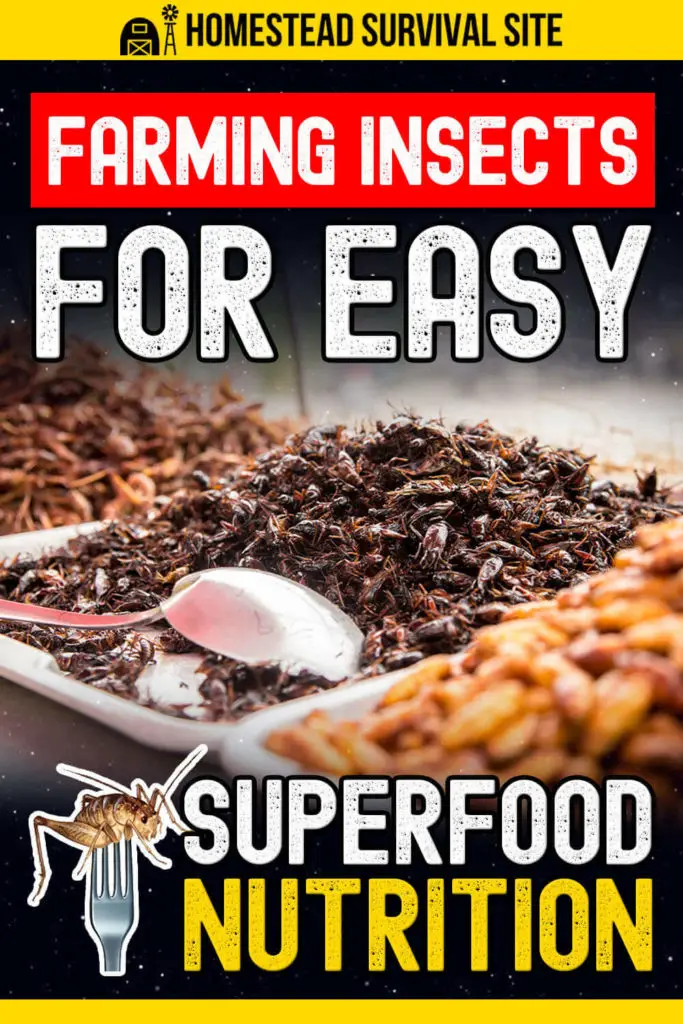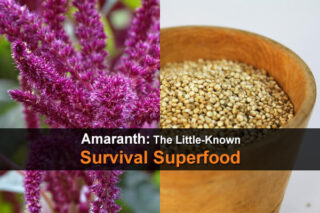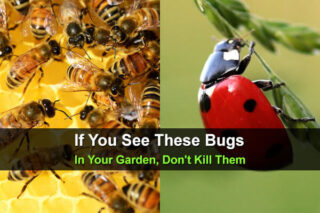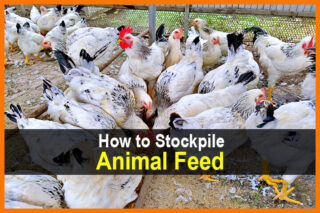Estimated reading time: 6 minutes
Modern western culture may irrationally view eating insects as a disgusting idea, but insects are an extremely abundant source of high quality calories and nutrients, and humans have been feasting on these high protein superfood creepy crawlies since our species emerged. These days, eating insects is called “entomophagy” and can refer to the consumption of any of the many types of edible insects.
Reasons to use insects as food include more than just the nutritional benefits: it can help to reduce pest populations on food crops in the case of wild harvesting, it's a much more resource efficient way of producing protein than via livestock such as cattle, pigs, sheep, goats, and even chickens potentially, and it uses much less land, creating fewer greenhouse gases in the process. Compared to other creatures consumed by humans, insects also carry far fewer pathogens and diseases that can transfer to us.
It’s not just humans that can benefit from eating insects either. Pets, fish, and livestock can be fed insects as well, with government and corporate research beginning to take note of the efficiencies and health benefits over traditional feeds. Insects even contain taurine, an organic compound that some animals, particularly carnivores, cannot create themselves, so insects may even be a suitable cat food, for example. On top of this, many people describe most insects as being delicious, with flavors ranging from “nutty” to “apple-like”.
As mentioned, there are many types of insects that are edible and nutritious for humans and livestock alike, but we will go over the basics of just a few of the most popular types of insects in this article: grasshoppers, crickets, and mealworms.
Want to save this post for later? Click Here to Pin it On Pinterest!
Grasshoppers
Grasshoppers contain 20.6 grams protein, 6.1 grams fat, and 3.9 grams carbohydrate per 100 grams.
Common species include Locusta migratoria and Schistocerca gregaria. Grasshoppers, sometimes called locusts, start off in egg clusters laid in the ground, or in plant matter, which take 2-3 weeks to hatch. They hatch into wingless “nymphs”, which grow fast, molting (shedding skin) about eight times before their final molt into adults with wings at about four weeks. Two weeks later they begin to mate, living for five months total.
A large ventilated container is needed, with a mesh rather than fabric lid. For a dozen grasshoppers, you need about 20 x 20 x 10 inches, for example, and for more, expand the size accordingly. The container should be filled with dry sand, dry oatmeal, or coconut fiber, and should contain branches and twigs as habitat.
It should be lit either naturally, or via a bulb, with careful attention to keeping the temperature between 77 and 95 degrees Fahrenheit. Humidity should be kept relatively low, and you should not put water directly in the container, but instead, spray their food with water.
Food for grasshoppers consists of only plant material, including reeds, canary grass, fresh wheat leaves, alfalfa leaves, corn leaves, and other vegetables. Grasshoppers will breed naturally under the right conditions, and breeding will slow down in low temperatures.
It is also possible to grow grasshoppers outside, using your native grasshopper population. Simply create as large of a habitat zone as possible where you let grasses and shrubs grow, and keep a strip of 6 feet or more around it mowed. You can then go in and catch the grasshoppers with nets as they mature, sweeping the net in an upward motion. You may choose to import grasshoppers in at first from surrounding areas to boost their population and get their population going.
Crickets
Cricket contain 12.9 grams protein, 5.5 grams fat, and 5.1 grams carbohydrate per 100 grams.
A good sized container for a cricket is a 14 gallon, smooth-sided bin with a mesh top for ventilation, which will hold up to 500 of the insects. Crickets require water, but should not be watered from an open container unless it is very shallow. A better idea is to use “Aquasorb” or a similar silica-based product that absorbs water into it, which the crickets can then drink from. Watering pads are also available for purchase, or you can simply use a wet sponge or cotton balls, which should be changed regularly. The temperature of the container should be kept at 86 degrees Fahrenheit or thereabouts.
Place paper egg cartons in the container to provide habitat for the crickets, and change them when they become soiled or dirty. Crickets can be fed vegetable matter ranging from common vegetables to pumpkins, and it is said what they eat can affect their taste. For example, if you feed them mint, you may get a minty tasting treat. Unless you are prepared to clean any rotting fruit up daily, it’s best to stick to things that don’t rot as quickly.
To breed crickets, you will need a small amount of topsoil in a tray, which must be kept moist. Once the eggs are laid (you will notice tiny rice-like nubs sticking out of the soil), remove the tray and keep it at 90 percent humidity in a separate container. The baby crickets will hatch within 7 to 10 days if they are kept warm and moist.
Mealworms
Mealworms also require a ventilated container, but can’t climb out as easily as crickets or grasshoppers, so using smooth plastic isn’t as important. The container should be filled to about 2-4 inches with oatmeal. Good food sources for mealworms include potatoes and carrots, and like crickets, they will use paper egg cartons to hide beneath. About once a week, you can change their oatmeal, and you may replace or add food as needed.
After about a month, mealworms will darken in color, and finally, about a week later, they will morph into black beetles and lay eggs within a couple of weeks. Mealworm containers should be kept at room temperature, and should not get hot or cold. Their water can be obtained from fruit and vegetables with some moisture content.
It’s best to have one container for grown beetles, which you will harvest larva from to put in their own container, followed by moving them once again into a separate container once they grow into pupa, a mouthless, legless stage of life where they do not eat, but are at risk of being eaten by the other life stages.
Mealworms are an excellent feed for chickens, but of course, can be eaten by humans and other animals as well. When they reach a golden color, this is considered a prime time to harvest them.
Hopefully, you have now been convinced of the benefits of farming insects for your own nutrition or for livestock feed, and have warmed up to the idea of undertaking an insect farming project yourself. Even if you don’t feel like eating insects immediately, if you should ever get into an emergency survival situation, at least you will have an idea of how to ramp up production of a highly nutritious, low maintenance food source for you, your family, and your animals.
If you have any more ideas about farming insects, or have any comments about the above tips, don’t hesitate to comment below!
Like this post? Don't forget to Pin It On Pinterest!











